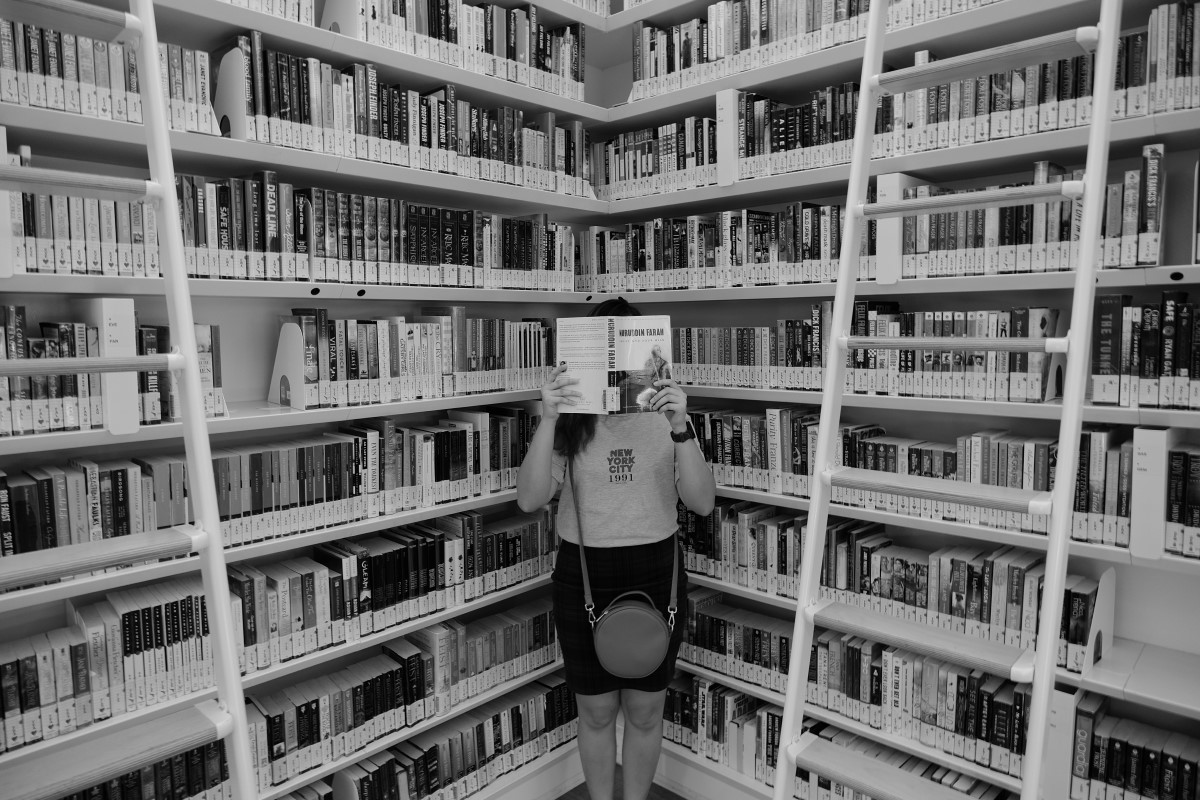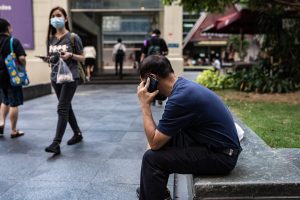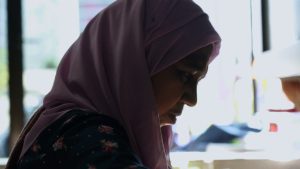This is a Shortlisted entry in the Rice Media x DLS Op-Ed competition. This article represents the views of neither Rice Media nor Dialogic Learning Services and is solely the opinion of the author. Authors’ names and schools have been hidden from readers and Rice Media’s judges so as to prevent bias during voting & judging.
Vote for the Readers’ Choice Award here; see all Shortlisted Op-Eds here.
Additionally, do note that the authors of these articles are minors who have bravely shared their writing with us; we entreat readers to treat their opinions with the appropriate sensitivity and care.
It’s a common saying that in this age of Twitter, no one reads any piece of writing longer than two sentences – especially books. Books are bad enough, but an article about books? Don’t even get me started.
But hear my case for SingLit.
SingLit is an abbreviation of “Singapore literature”, broadly defined as any piece of writing by a Singaporean, or set in Singapore, in a way that is of significant rather than incidental interest.
This might sound (ironically) utterly foreign – you mean Crazy Rich Asians isn’t the only representation of Singapore we get in books? Most people have barely heard of SingLit, let alone read it. In 2018, only 18% of adults read at least one SingLit book, and there was a gaping lack of awareness of SingLit among those above 30. Even among those who have heard of it, few take the step to read it.
However, there’s truly so much to be said about the importance of reading local literature.
Chapter 1: Hey Look, That’s Me!
In a Straits Times article, writer Joshua Ip brought up the idea of “identification” – in which we identify (surprise!) with a character. In these cases, the cadence of characters’ speech, their dressing, the environment and situations they face reminds us of ourselves or things in our life.
Growing up, I was invested in the lives of so many different characters, who were entirely… not me. They were predominantly white, and lived in an environment so different from mine, it was as though we were countries apart.
Oh, wait.
I was thrilled every time I so much as glimpsed the word “Singapore” on a page, having encountered even a tiny spark of familiarity.
While reading the experiences of characters different from us is exciting, there is immense value in exploring the experiences of characters we identify with. We don’t merely view the lives of characters from a distance, but rather live their lives.
I remember the first book of SingLit I picked up from a dusty corner of my home: Miss Seetoh In The World by Catherine Lim. What drew me was not just the unconventional name but the realisation upon reading the synopsis that it was a story set in Singapore!
It felt both familiar and yet so new to explore the life of this character. It wasn’t just interesting but immersive to trace the ups and downs of the nation, and read about a life I could easily picture. It felt as though I had opened the portal to a new world, when in fact I had found home in a book.
Later, in stories such as Sugarbread by Balli Kaur Jaswal, I could relive moments of my childhood: going to the Pasar Malam, taking the school bus, or walking around Singapore with my parents.
I am so different from the protagonist of the novel: She is a Punjabi primary school girl, and I am neither Punjabi nor in primary school. Yet, the mere fact of the story being set in such an intimately familiar environment and her similar experiences to mine (e.g. school here) meant that I could see myself in her. I didn’t just see her go to the Longkang, I was there with her.
This representation is also so important in affirming our self-worth. By reading characters who remind us of ourselves, we recognise that we are worthy to be written about, that our experiences, culture and ideas are valid and celebrated.
And sometimes, it’s just nice to be seen.
Chapter 2: Different Stories, Different Lives
The power of literature is often in the multiple perspectives it offers. The wide range of local literature means that as more topics are covered, there is more light being shone on different groups in Singapore.
Many books offer a look into the experience of different races in Singapore – Sugarbread raises uncomfortable questions about race through the eyes of a young Punjabi narrator, while in Malay Sketches, Alfian Sa’at presents experiences of Malays through a series of vignettes.
There is also an expansion in the kinds of voices represented in our local literature. Our migrant workers also have written books in Singapore – for example, Me Migrant is a collection of poems by Md Mukul Hossine, a Bangladeshi migrant worker, while Call and Response is an anthology of poems in which local poets “respond” to migrant poets through poetry.
Non-fiction books, too, shine a spotlight on the segments of society often invisible and overlooked. This Is What Inequality Looks Like by Teo Yeo Yenn – a title that grabs at you and a book that doesn’t lose that hold – reveals the lives of the lower income members in our society and forces us to grapple with both individual perceptions and societal structures.
There is tremendous power in art to create empathy, and SingLit allows us to immerse ourselves in our own country beyond our immediate circles. And perhaps more importantly, by providing that window into the lives of others, it invites us to extend that understanding and empathy in our daily lives.
Chapter 3: SG Rediscover
Last year, SG rediscovery vouchers encouraged us to visit different places in Singapore. But what if there’s a way to discover Singapore in an entirely Covid-safe manner?
We’re all familiar with the straightforward Singapore story – from Sang Nila Utama to Raffles, then the founding fathers who eventually made Singapore into the thriving, multicultural economic hub it is today.
Except, as local literature proves, there’s more to the picture.
SingLit challenges these simplistic narratives by poking beneath the surface. It offers different perspectives on unseen – and untalked – about aspects of Singapore.
The book The Art of Charlie Chan Hock Chye by Sonny Liew not only provided a (literally) colourful overview of the history of Singapore, it also revealed new perspectives on historical events, such as the Hock Lee bus riots, and the early political struggles. Similarly, the State of Emergency by Jeremy Tiang traces the leftist movement in Singapore’s history
Meanwhile, The Riot Act by Sebastian Sim is a work of satire that highlights the political and often performative nature of our society through the different responses to the Little India riots in 2013.
We often think of daily life as just “like that lorh”. We seldom stop to take a second look at the things around us: HDBs, hawker centres, parks, shops. Here, SingLit acts as a new pair of lenses, giving us deeper insight and meaning into the little things of everyday life. For instance, reading Alfian Sa’at’s poem “View From A Window” challenged me to take a second look at our HDBs and reflect on our gradual estrangement from one another.
By subverting and adding to standard narratives, SingLit lends nuance to our perception of what Singapore is. We don’t just discover what Singapore is, but rediscover it from a new perspective.
Epilogue: SingLit? Sian…
Then there’s the question: Singaporeans don’t even read books – why bother with SingLit? Surely if one only reads only around 4 books a year, a piece of Singaporean literature would hardly be the first (or second… or even fourth) choice – a practical option would be some form of business, self-help or even a classic work, to flex those intellectual muscles.
Firstly, please read more books. And secondly, reading provides us with insight into what it truly means to be human and alive – and SingLit takes that one step further. By furnishing us with stories so tightly interwoven with our own lives, we are able to develop a very personal relationship with the story, and really live through it.
The largest caveat people have about SingLit is doubt over its quality. Yes, perhaps our books are not Booker prize-winning (but neither are most books elsewhere, except, well, Booker prize winners) but many have gained international recognition and awards.
The aforementioned book The Art of Charlie Chan Hock Chye gained much international acclaim, including 3 Eisner awards, while books like Ministry of Moral Panic by Amanda Lee Koe were longlisted for the Frank O’Connor International Short Story Award. Publishing rights for books by Singaporean authors have also been bought by internationally-renowned publishers for eye-wateringly large sums.
No literature scene is homogenous in quality, but evidently there is good writing, and the increasing number of books means there’s something for everyone. SingLit may not be the standard of Shakespeare, but who reads Shakespeare anyway? (I’m so sorry, school lit text, I promise I’ll read you… someday.)
Footnote
To me, one of the fascinations of SingLit is in how it navigates and pushes the boundaries of what can and is said. The changing nature of it is also incredibly exciting, as the expansion of genres and themes allows us to explore Singapore in even more ways.
Ultimately, local literature acts as a mirror to our world, reflecting both the ugly and the beautiful, challenging the simple and demystifying the complicated.
To truly reflect our world, SingLit needs us: to read, to learn, to laugh, but most importantly, to live through it.






